
Austria 2023 by ombiasy WineTours
Sunday, May 28 – Thursday, June 08, 2023
Wien, Wagram, Carnuntum, Burgenland, Steiermark, Wachau, Kamptal, Kremstal, Traisental.
Austria is such a beautiful and charming country, no matter where you go.
We started the tour in Imperial Vienna and discovered that Vienna was not only the breathtakingly beautiful capital of Austria, but also a wine region that is famous for its “Heurige” and “Gemischter Satz” (field blend).
We then traveled south to the Carnuntum region, where wine was made more than 2000 years ago and which is famous for its red wine produced from the Zweigelt grape.
The Burgenland is the easternmost Austrian wine region and shares a 240 miles long border with Hungary. Burgenland’s history is closely intertwined with that of Hungary and we sometimes cross borders to reach our next destination. More and more red wine is produced in Burgenland where the late-ripening “Blaufränkisch” grape is king in some appellations.
The southernmost wine region – Steiermark, Styria – is a mountain region. Fantastic Sauvignon-Blanc is king here. The vineyards in this magnificent, hilly landscape alternate with forests, idyllic orchards, and flower meadows.
We spent one night in Graz, where we attended a performance at the beautiful Opera House. Graz is Austrian’s second largest city and capital of the Steiermark region. The historic Renaissance and Baroque city center of Graz is one of the best preserved in Central Europe and a UNESCO World Heritage Site.
On our way to Lower Austria we stopped in Eisenstadt, the capital of the Burgenland region west of lake Neusiedl. Here we visited the famous Eszerházy palace and the house where Joseph Haydn lived.
We finished the tour with another highlight: the Wachau, the Kremstal, the Kamptal, and the Traisental appellations in the romantic Lower Austria wine region right on the banks of the Danube river where we do an in-depth exploration of Austria’s most widespread variety “Grüner Veltliner”.
Accommodation: 11 Nights
Night 1: Sunday, May 28
► Mercure Hotel Wien Zentrum, a 4 star modern hotel right in the heart of Vienna’s historic city centre. St.Stephans cathedral, the State Opera, the recently re-opened Albertina, Hofburg, Museums Quarter, Hotel Sacher, and the exclusive shopping areas are within walking distance.
Nights 2 + 3: Monday, May 29 + Tuesday, May 30
► Hotel Knappenstöckl, Schloss Halbturn in Halbturn a family-run, small, very charming hotel in a fantastic location, in the park of the Baroque castle Halbturn, a favorite week-end retreat of Habsburg’s Empress Maria-Theresia.
Night 4: Wednesday, May 31
► Wohnothek Ratschen in Deutsch-Schützen, a 4 star, unique accommodation comprising 25 individual loft-like, high-end wooden bungalows in the middle of the Deutsch-Schützener vineyards with spa, pool, and a highly acclaimed restaurant. Wake up to the sound of nature and the smells of a vineyard.
Nights 5 + 6: Thursday, June 01 + Friday, June 02
► Weinrefugium Brolli in the vicinity of Gamlitz, a 4 star hotel with a pool and spa facilities located in an absolutely beautiful spot. The vineyard rooms, which I reserved, are very upscale with a balcony providing for stunning views over the vineyards and the gorgeous Styria landscape.
Night 7: Saturday, June 03
► Palais Hotel Erzherzog Johann in Graz, this 4 star, elegant hotel in a former 60 room Baroque palace makes you feel being transported back to Habsburg times. The location is perfect: right in the center of charming old town Graz.
Night 8: Sunday, June 04
► Loisium Wine & Spa Resort in Langenlois, Kamptal, a 4 star, luxurious, very modern hotel designed by US star-architect Steven Holl on the outskirts of Langenlois with views towards the vineyards.
Nights 9 + 10: Monday June 05 + Tuesday June 06
► Hotel Richard Löwenherz in Dürnstein, Wachau, a 4 star hotel in a spectacular location high above the Danube river in the historic town of Dürnstein. The hotel was a former Clarisse monastery and the medieval structure and historic furniture add to the romantic ambiance.
Night 11: Wednesday, June 07
► Back at Mercure Hotel Wien Zentrum.
ITINERARY
DAY 00: Saturday, May 27
Austria 2023 by ombiasy WineTours started on Sunday, May 28, 2023. All of us arrived at least one day before the tour started. Annette and I arrived on Sunday, May 27, in the afternoon by train from Munich.
07.30 pm Dinner at an Iconic Beisl in Vienna: Griechenbeisl
We went out for dinner to the Griechenbeisl, an iconic place and the oldest restaurant in Vienna, where we bumped into Vicky and Bruce, who had also chosen the Griechenbeisl for dinner.
Griechenbeisl: Those who love Vienna dine at the Griechenbeisl, the oldest Inn in town.
Enjoy traditional Viennese dining in a cosy historical ambiance. Find
yourself in the same room in which famous guests like Mark Twain,
Beethoven, Mozart, Luciano Pavarotti and Johnny Cash enjoyed their
dinner.
DAY 01: Sunday, May 28
12.00 pm We met in the lobby of Mercure Hotel Wien Zentrum.
01.00 pm Departure and drive to Klosterneuburg.
02.00 pm Guided Tour of the Monastery and Palace Klosterneuburg.
Klosterneuburg is an incredibly beautiful and very special place, not just in Austria, but on the planet. It has been Austria’s most important religious, cultural, and enological center for more than 900 years. Markgraf Leopold III laid the foundation stone in 1114. In 1133 Bishop Hartmann and thirty Augustinian Canons founded the monastery and worked fields and vineyards to sustain their living. The mighty Monastery and Palace Klosterneuburg -visible from afar- is breathtakingly beautiful: the location on the banks of the Danube river and its appearance that mostly goes back to the Baroque period. We will see the monastery as well as the famous Imperial Appartments.
04.00 pm Tour and Tasting at Weingut Stift Klosterneuburg, Wagram.
Stift Klosterneuburg is one of the oldest continuously operated wine estates of the world. Since 1133, except for four years during WWII, Augustinian monks made wine at Stift Klosterneuburg. Today Stift Klosterneuburg is Austria’s oldest and largest privately owned wine estate with 225 acres of vineyards in top sites around Klosterneuburg. In 1860 the monks founded the first enological school which still today has a stellar reputation, and most of the top winemakers in Austria studied here. Stift Kosterneuburg is also Austria’s only carbon-neutral winery. We did do a tour through the old barrel
cellars and had a tasting of the Klosterneuburg wines.
05.00 pm Back at Mercure Hotel Wien Zentrum.
07.30 pm Wiener Schnitzel and Tafelspitz at Plachutta in der Wollzeile,
Vienna.
This is Vienna’s most famous and best place to have Austria’s signature dishes: Vienna Schnitzel and Tafelspitz at its best. Plachutta is more than a restaurant: it is a Vienna institution.
10.00 pm After Dinner Drinks at Vis-a-Vis Wine Bar.
Most of us went back to the hotel after the dinner at Plachutta. Four of us stopped at Vis-a-Vis Wine Bar for an after-dinner glass of wine.
Vis-a-Vis offers over 300 wines, both domestic and international, with a strong emphasis on the former. It is also a good place to discover talented Austrian newcomers.
DAY 02: Monday, May 29
09.00 am Check-out at hotel and drive to the Schönbrunn Palace.
10.00 am Guided private tour of the Schönbrunn Imperial Palace.
Schönbrunn Palace on the outskirts of the city of Vienna is one of Europe's most beautiful Baroque castles and has been in the possession of the Habsburg dynasty since 1569. For centuries it was the summer home of the ruling Habsburg family. A visit to Schönbrunn Palace is the most authentic experience of imperial heritage. This UNESCO world heritage site shows centuries of Austrian history and culture.
We had the Grand Tour through 40 spectacular rooms where famous emperors such as Empress Maria Theresia and Empress Sisi lived. Photos are not allowed. Still, I took a few.
12.00 pm Fiaker sightseeing tour of Vienna.
A “Fiaker” is the Austrian word for “horse-drawn carriage”. What can be more romantic than enjoying a city tour in a Fiaker. Lean back, let the trot of the horses make you totally relaxed, and learn about the city of Vienna from our English-speaking coachman.
02.15 pm Lunch at Restaurant "Die Seejungfrau" in Jois, Lake Neusiedl.
The restaurant sits in a beautiful place: right at the northern tip of Lake Neusiedl.
04.00 pm Vineyard Tour, Cellar Tour and Tasting at Weingut Leo Hillinger, Burgenland, with Jakob Scharner, Diplom-Sommelier
Leo Hillinger can only be described as a jack-of-all-trades – an extremely likeable person with a very capable, innovative mind. Leo’s parents operated a small winemaking facility with less than 1 acres of vineyards, a Heurige, and a wine shop in Jois. Leo grew up among vines and wine. He then travelled the world, worked at wineries in Europe, California, South Africa, did a vocational training at a winery in Rheinland-Pfalz, Germany, where he finished with a state-certified economist and master winemaker
degree in Germany. After coming back to Jois, he took over his parent’s business in 1990 and developed all sorts of business ideas until finally, in 2004, winery Leo Hillinger opened its doors.
Today Leo Hillinger is a winemaker, entrepreneur, TV star, high performance athlete and owner of 250 acres of top vineyards and a modern winery with a state-of-the-art cellar facility. Hillinger wines are regularly rated at top levels in Wine Enthusiast, the Austrian life-style magazine Falstaff, and at other wine competitions. At the Leo Hillinger winery, quality is inextricably linked to organic
farming and the organic development of the wines.
We enjoyed a lovely tour and tasting at Weingut Leo Hillinger with Jakob Scharner, Diplom-Sommelier.
Halbturn Palace, one of the most important baroque buildings in Burgenland, once served the imperial family as a hunting and summer residence. We stayed at Hotel Knappenstöckl, which used to be Schloss Halbturn’s residential wing. Each room has a historic décor and a modern bathroom. Some rooms have solid oak floors and a separate living room and bedroom. Restaurant Knappenstöckl offers regional cuisine such as deer and fish.

06.00 pm Sekt Reception at "Restaurant Knappenstöckl im Schloss Halbturn"
After spending the day in Vienna and in Jois at Lake Neusiedl, we arrived in the late afternoon at Schloss Halbturn, where we started our stay there with a Sekt reception in the courtyard of Schloss Halbturn, with a Weingut Schloss Halbturn Sekt Brut.
07.00 pm Dinner at "Restaurant Knappenstöckl im Schloss Halbturn"
Following the Sekt reception, we went over to our table in the courtyard for a wine.pairing dinner, again with wines from Weingut Schloss Halbturn.
Good Night
DAY 03: Tuesday, May 30
The next three days we discovered the Burgenland wine region. We visited wineries in the Neusiedlersee, Leithaberg, and Eisenberg sub wine regions. The northern sector of Burgenland is dominated by Lake Neusiedl, Europe’s largest steppe lake, which straddles the Austria-Hungary border. The proximity of this region to Hungary’s warm Pannonian plains produces uniques wines from the indigenous Blaufränkisch, Zweigelt, and St. Laurent grapes as well as white wines and noble sweet wines.
09.00 am Leaving Hotel Knappenstöckl.
09.30 am Weingut Franz und Christine Netzl in Göttlesbrunn, Carnuntum.
The Netzl Estate is located in the small town of Göttlesbrunn in the Carnuntum. The family winery has been established in 1820 and developed from a mixed farming estate. Today the winery has 75 acres of vineyards, a lot of them in top sites such as Aubühel, Bärnreiser, Haidacker, Holzweg, Kräften and Neuberg.
80% of the vineyards are planted with red grape varieties while the remaining 20% is planted with the white varieties Grüner Veltliner, Pinot Blanc, Chardonnay, and Welschriesling. A bottle-fermented
sparkling wine is also produced. Annual production is around 80.000 bottles of wine.
Franz and Christine Netzl are regarded as one of those responsible for the red wine boom in this region. The king for red wine production in this area is and remains the Austrian grape variety Zweigelt. The grape was bred at the enological school at Kosterneuburg in the 1920s. Zweigelt is just perfect for the climatic conditions of the Carnuntum and its soil compositions. The incredible versatility of the grape is its other asset.
Christina and Franz Netzl were our hosts. Christine Netzl joint us during the tour.
The tour started in the new tasting room, where Franz and Christina introduced us to the different soils of their vineyards. We toured the wine cellar and went to the vineyard. The visit ended with a seated tasting lead by Franz Netzl.
12.00 pm Lunch at “Mole West” in Neusiedl.
The restaurant is located in a beautiful spot right at Lake Neusiedl. It made you feel a bit like being on a beach vacation.
02.00 pm Cellar Tour and Tasting at Weingut Anita and Hans Nittnaus, Burgenland, with Anita, Hans and Martin Nittnaus
Wine making in the Nittnaus family in the town of Gols at the northern tip of Lake Neusiedl goes back to 1684. Today it is Anita and Hans Nittnaus and their two sons who are managing the winery. The family’s philosophy is complete devotion to making wines reflecting the origin and terroir of the area. They work according to strict biodynamic principles, and since 2013 they are certified biodynamic by the small, rigorous “respect-BIODYN” organization. They have around 100 acres of vineyards in two distinctively different areas: around Gols with gravel, clay, sandy loam soils and in the Leithaberg with shell-limestone, quarzit, and slate soils. The wines from these two areas are vinified completely separately so that the terroir character is prominently displayed.
The Nittnaus are influencial pioneers of the contemporary dynamic wine scene in Burgenland. However, their pole position among Austrian red wine producers is due to an unusual blend, the Comondor.
I quote Anita and Hans Nittnaus: “In 1985 we took over the winery. We drank Bordeaux, Burgundy, Barolo etc, and planted Cabernet Sauvignon and Merlot. Internationality was the of the talk of the day. Only in the Ungerberg, our best vineyard, did we experiment and planted Blaufränkisch. The 1990 harvest then produced two outstanding wines. On the one hand the Cabernet Sauvignon from Edelgrund and on the other hand the Blaufränkisch from Ungerberg. For us it was clear that the two represented a dream couple that should be married. This is how the Comondor was born, which bears the Pannonian name of a historic Hungarian shepherd dog breed and has been something of the flagship of our winery ever since.”
04.00 pm Tour and Tasting at Weingut Umathum, Burgenland, with Joseph Umathum
Legendary owner/ winemaker Joseph Umathum was our host. We took a tour of the tank cellar, the barrel cellar and the vineyard before sitting down in the tasting room for a tasting of 11 wines.
The wines of Weingut Umathum are available in the USA through Winemonger.
In the 18 th century, ancestors of the Umathum family settled at the Neusiedlersee and created a mixed farming estate where they also produced wine. It was only in 1985 that Josef Umathum focused entirely on winemaking and Weingut Umathum has since then become one of Austria’s top notch wine producing estates with 150 acres of vineyards, farmed biodynamically.
The majority of vineyards are located in the northern Seewinkel community of Frauenkirchen on the eastern side of the Neusiedlersee; some vineyards are also across the lake in Jois, in the Leithaberg region.
Josef Umathum favors the traditional Austrian
grape varieties: Zweigelt, St. Laurent, and Blaufränkisch account for
85% of his plantations. The rest of his vineyards are planted with the
traditional Welschriesling, Roter Traminer, and Gelber Traminer.
06.00 pm Back at Hotel Knappenstöckl.
07.30 pm Dinner at Restaurant Knappenstöckl.
Touring Weingut Schloss Halbturn with Torsten Aumueller
This time, we did not visit Weingut Schloss Halbturn, but I visited Weingut Schloss Halbturn several years ago: On the Monday morning following the wedding, before going to Somlo in Hungary to meet Istvan Stephan Spiegelberg, Torsten Aumueller provided me with a quick tour of Weingut Schloss Halbturn. He went again into the major restructuring efforts that started in 2001. Torsten emphasized over and over again the high quality standards that have been applied since then, including, inter alia the manual and very selective harvest in the vineyard and the rigorous double sorting of the grapes in the wine cellar before vinification.
See: A Wedding and a Wine Tasting at Schloss Halbturn in Austria
DAY 04: Wednesday, May 31
09.00 am Check-out at Hotel Knappenstöckl and departure.
09.30 am Tour and Tasting at Weingut Steindorfer, Apetlon, Burgenland, with Ernst and Roland Steindorfer
The visit consisted of a cellar tour and a seated tasting.
Weingut Steindorfer wines are imported in the US by Klaus Wittauer and are widely available in the Washington DC area and at the East Coast of the US.
The Steindorfer family’s viticulture tradition in Apetlon can be traced back to 1896. Today they farm 25 acres in the southern Seewinkel area of Burgenland. This area is also well-known as a nature reserve and bird paradise. The wine country in this area is completely flat, and the vineyards reach from the lake to the Hungarian border. The vineyards close to the lake can produce beautiful, sweet wines when the fog settles over the vines triggering botrytis. The vineyards more inland, around the village of Apelton, are perfect for producing dry, intense red wines from Zweigelt, St. Laurent, and Blaufränkisch grapes, and fresh, dry white wines from Welschriesling, Pinot Gris, and Chardonnay.
Flagship is the St. Laurent Reserve, a well-balanced, elegant wine with a strong concentration of dark berry flavors, spices, tannins, and vibrant acidity. This wine is fermented in stainless steel tanks and then aged for 14 months in new barriques.
11.45 am Light Lunch at Gránátos Étterem at Esterházy Kástely in Fertöd, Hungary: Hungarian Goulash Soup and Esterházy Cake
After the visit of Weingut Steindorfer in Apetlon, Burgenland, we went for lunch to Hungary, to Gránátos Étterem at Esterházy Kástely in Fertöd and had Hungarian Goulash Soup and Esterházy Cake.
The House of Esterházy
The House of Esterházy is a noble Hungarian family, whith origins in the Middle Ages. From the 17th century, the Esterházys were the greatest landowner magnates of the Kingdom of Hungary, during the time that it was part of the Habsburg monarchy and later Austria-Hungary. During the history of the Habsburg empire, the Esterházy family was consistently loyal to the Habsburg rulers.
The most important seat of the Esterházys was Kismarton (today Eisenstadt, Austria) - which we visited later on the tour - since the heads of the family chose to make a castle in this tiny village their primary residence. A fortified stronghold had been built there in the 14th century; after the Esterházys acquired it they rebuilt it 1663–1672 to what is now the princely Schloss Esterházy.
In the 1770s, Prince Nikolaus Esterházy, who disliked Vienna, had a magnificent new palace constructed in Fertöd, where we had lunch. It was built on the site of a former hunting lodge. Today this
is the most admired of the Esterházy homes, often called the "Hungarian Versailles".
02.00 pm At the Liszt House in Raiding, where the Great Pianist, Romantic Composer and Conductor was Born
Composer and Piano Virtuoso Franz Liszt was born in this house on October 22 in 1811.
Adam Liszt, father of Franz Liszt, was the bookkeeper of a sheep farm at the Esterházy estate and with the job came the right to live in this house which was part of the estate. Adam Liszt was also an accomplished musician and played the cello in Prince Esterházy’s orchestra.
At that time this part of Austria belonged to the Kingdom of Hungary. Thus Franz Liszt was Hungarian.
The Hungarian noble family Esterházy was the greatest landowner in the Kingdom of Hungary, when it was part of the Habsburg Monarchy and later Austria-Hungary.
04.00 pm Tasting at Weingut Straka, Rechnitz, Burgenland, with Thomas Straka
The visit of Weingut Strake in the town of Rechnitz in the Eisenberg region of the Burgenland was a tasting only visit. We sat down with Tom Straka in his stylish tasting room.
Weingut Straka wines are available in the USA through wine monger in California.
Weingut Straka is a family estate established in the 18 th century in the town of Rchnitz in the Eisenberg region of the Burgenland. The family’s roots are in the Bohemia region, which is now part of the Czech Republic.
Since 2008 Tom Straka manages the estate and immediately started to convert to organic viticulture.
Tom is a huge advocate of Welschriesling which he says can pair with anything if grown properly. Welschriesling is an old indigenous grape perfectly suited to the geography of this rare geological area. Rechnitz sits 1000 feet above sea level on the slopes of the Geschriebenstein, the highest mountain in the Burgenland and the last foothills of the Alps. The vineyards climb as high as 1500 feet and are known for their unique geological soils -- a combination of crystalline schist and magmatic deposits that can only be found in 3 other places in the world. It is a very windy and dry area which cools off considerably at night. This results in very few pests, no need for herbicide or any other treatments and crisp clear mineral-driven wines. The parentage of Welschriesling is not known (it is not related to Riesling) and is thought to be most closely related to Elbling, which is found along the Mosel river in Germany and Luxembourg and along the Danube river in Croatia.
05.30 pm High-end Sleeping and Eating in the Vineyard: Wohnothek am Ratschen and Restaurant am Ratschen (16/ 20 Gault Millau), Deutsch-Schützen
We stayed the night at the Wohnothek am Ratschen in Deutsch-Schuetzen, a hotel consisting of 26 individual wooden bungalows in the vineyard and had dinner at the Restaurant am Ratchen, which has 16/ 20 Points in the Gault-Millau Guide (which is comparable to 1 star in the Michelin Guide, there is no Michelin Guide for Austria).
When we were there, Daniel Sulzer was in charge of the kitchen. Since July 2023, Mateo Lopez, is the Executive Chef at the Restaurant am Ratschen.
The Wohnothek am Ratschen and the Restaurant am Ratschen were founded, owned and run by Josef and Gerda Wiesler (nee Wachter). Recently, investor Hans Kilger from
Munich, Germany, has become a partner of Wohnothek am Ratschen and
Restaurant am Ratschen.
The following day we visited Weingut Wachter-Wiesler in Deutsch-Schützen, which came into being through the amalgamation of Weingut Wachter and Weingut Wiesler through a marriage.
Today, Weingut Wachter-Wiesler is run and owned by Christoph and Anne Wachter.
There is also Weingut Thom Wachter, run and owned by Thom Wachter, brother of Gerda Wiesler. Before creating his own winery, Thom Wachter was involved in the Restaurant am Ratschen as sommelier and co-owner.
DAY 05: Thursday, June 01
We continued exploring the southernmost part of Burgenland which is home to the region’s purest and most natural viticultural landscape. The regionally authentic red wines, especially those made from Blaufränkisch with the protected designation of origin Eisenberg DAC, are characterized by a particular mineral spiciness. There are also great white wines and the local speciality Uhudler.
09.15 am Check-out at hotel and departure.
09.30 am Tasting at Weingut Wachter-Wiesler, Burgenland, with Julia Wachter
Christoph Wachter is a leading producer in the Eisenberg DAC and handcrafts very fine wines of great purity and elegance. The 2015 Blaufränkisch bottlings are fabulous in their perfect ripeness and balance. Without a doubt, these are great Austrian red wines."
—Stephan Reinhardt, Wine Advocate
The stage was set for a winemaking revolution. It began with the move away from new oak for ageing and towards lower alcohol levels (12.5% is now typical and 12% quite common for regular Eisenberg DAC wines) pioneered by the then almost absurdly young Christoph Wachter of the Wachter-Wiesler winery in Deutsch Schützen. For him, this was all about letting the floral (violets and lilac), black fruit (elderberry and sour cherry) and spicy aromas (black pepper and clove) from the grape shine, and allowing the dry tannins and bright acidity of the grape to speak clearly rather than being smothered by flavors extracted from new oak barrels."
—Stuart Pigott, JamesSuckling.com
Weingut Wachter-Wiesler is run and owned by Christoph and Anne Wachter.
There is also Weingut Thom Wachter, run and owned by Thom Wachter, brother of Gerda Wiesler. Before creating his own winery, Thom Wachter was involved at the Restaurant am Ratschen as sommelier and co-owner.
The visit at Weingut Wachter-Wiesler was a tasting only, led by Anne Wachter.
The wines of Weingut Wachter-Wiesler are available in the USA through Bowler-Wines.
The vineyard area totals 9 hectares today, with holdings in top-rated sites in Deutsch-Schützen and Eisenberg. 95% of the area is planted with the red varieties Zweigelt, Blaufränkisch, Cabernet Sauvignon and Merlot, the remainder is planted with Welschriesling. In addition, grapes are bought in from an additional 2 hectares of vineyards. The flagship product is the Cuvée Julia, a blend of Blaufränkisch, Cabernet Sauvignon and Merlot, aged in barriques for 16 months.
11.30 am Tour, Tasting and Lunch at Weingut Jalits, Burgenland, with Mathias Jalits
Mathias Jalits, fifth generation of the Jalits family, who is running the estate, was our host.
He took us to the new winemaking facilities in the back of the estate before sitting down in the old, traditional wine tavern, which is also run by the Jalits family, for a simple lunch, prepared by the mother of Mathias, cum wine tasting of the Jalits wines.
Weingut Jalits are repesented in the USA by Klaus Wittauer and are widely available in the greater Washington DC area.
Since 2001 it is Mathias Jalits, fifth generation of the Jalits family, who is running the estate. He farms 40 acres of vineyards planted with Blaufränkisch, Zweigelt, Cabernet-Sauvignon, Merlot, Blauburger, Blauer Portugieser, and Pinot Noir and the white varieties of Welschriesling, Grüner Veltliner, and Pinot Blanc.
Mathias’ aim is to produce wines that
are typical of the region and this is his philosophy: The
down-to-earth nature of the region should be reflected in my wines.
That's who I am, that's how Southern Burgenland is,
that's how our wines should be.
03.30 pm Tour and Tasting at Weingut Neumeister, Straden, Vulkanland, Steiermark, with Christoph Neumeister
After lunch at Weingut Jalits with Mathias Jalits we left the Burgenland wine region and traveled to the southernmost Austrian wine region, the Steiermark – Styria, that borders Slovenia.
Our first stop was Weingut Neumeister in Straden in Vulkanland, Steiermark.
Christoph Neumeister was our host. After a visit of the winery, we sat down for a tasting of 12 wines.
Weingut Neumeister wines are available in the USA through Winemonger.
The Neumeister winery in Straden is a family affair. Brothers Christoph and Matthias Neumeister are the third generation running the winery and they do this very successfully pursuing their own philosophy.
We are here in the Vulkanland part of the Steiermark that differs climatically from neighboring Südsteiermark - Southern Styra and is characterized by a mixed Illyrian-Pannonian climate. This brings warm days and cool nights as well as sufficient rainfall and a higher average temperature which in turn allows for a long growing season and late harvest. The soils are characterized by calcareous sediments which were deposited here in the Tertiary from the Alps.
Weingut Neumeister cultivates 75 acres of vineyards which are spread out over countless small parcels on very steep slopes. Some of these vineyards have reached an age of 40 years and more, and some are still single pole training, which means time-consuming manual work.
Since 2013 all vineyards have been cultivated organically. They are planted with Sauvignon Blanc, Morillon, Pinot Gris, Muskateller, and Traminer.
In 2019 Christoph Neumeister
received the “vintner of the year” award from Austrian life-style
magazine Falstaff.
06.30 pm Arrival and check-in at Hotel Weinrefugium in Gamlitz, Steiermark
We stayed 3 nights in the Steiermark, of which 2 nights in the Weinrefugium Brolli in Gamlitz. Both nights we had dinner on the terrace of Weinrefugium Brolli, with a breathtaking view, an excellent 3-course menu and wine from Weingut Brolli.
DAY 06: Friday, June 02
09.00 am Leaving hotel.
Today we explored in depth the beautiful, hilly Südsteiermark region which is famous for its crisp white wines. There is brilliantly fresh Sauvignon Blanc, delicious Welschriesling, crisp Schilcher and fruity Muskateller or Traminer. But also Burgundy varieties, above all Chardonnay -called Morillon here- thrive splendidly in Austria's southernmost wine-growing region. Nevertheless Sauvignon Blanc is king here.
09.15 am Tour and Tasting at Weingut Sattlerhof, Steiermark, with Justė Sattler
The visit of Weingut Sattlerhof comprised a visit of the vineyards and the cellar as well as tasting in the modern tasting room of Weingut Sattlerhof.
Juste Sattler, the wife of Andreas Sattler, was our host. Andreas has a bachelor’s degree in oenology and has been responsible for the cellar since 2014
Weingut Sattlerhoif is represented in the USA by Vineyard Brands.
Weingut Sattlerhof, Sernau, Südsteiermark
The idyllic Sattlerhof in Sernau, perched on a hill near Gamlitz in the middle of a vineyard, has been family-owned since 1887.
The winery belongs to the top addresses in Austria and the world, since the US magazine ‘Wine & Spirits’ included the Sattlerhof into the list of the 100 best wineries in the world in 2020.
Wilhelm Sattler sen. is considered a pioneer of dry winemaking in Styria, for which he was awarded the state's Golden Medal of Honor. Willi and Maria Sattler are running the winery together with their sons Andreas and Alexander.
The 87 acres of vineyards have vines up to 55 years old and are located in well-known sites such as Kranachberg, Sernauberg and the Pfarrweingarten monopoly site on steep slopes with an incline of up to 70 percent. Perfect physiological ripeness of the grapes, selective hand harvesting and puristic vinification are some of the artisanal steps with which the family has kept the quality of the wines at such high standards for decades.
The sons shifted to
biodynamic winemaking with the aim that this meticulous working method
allows the character of the excellent vineyards to evolve in the bottle
even more.
11.00 am Tour and Tasting at Weingut Wohlmuth, Steiermark, with Maria Wohlmuth - Austria 2023 by ombiasy WineTours
Weingut Wohlmuth, Kitzek, Südsteiermark
The Wohlmuth family has been growing wine at the foot of the Kitzecker mountains for over 200 years.
The winery is now managed by Gerhard Wohlmuth jun. He receives active support from Gerhard sen. and the family.
The passionate and always in a good mood winegrower family has proven over many years that they have a knack for the barren slate soils in Sausal and are not afraid of the hard manual work in the steep slopes at over 500m above sea level. Influenced by slate and the climate at this higher altitude, the Wohlmuth wines always show more structure and minerality than the rest of Südsteiermark.
Sauvignon Blanc, the most important variety at the winery, naturally benefits from this in particular, but the numerous other white grape varieties also produce excellent wines on the slate soil. The Gelber Muskateller Steinriegl, otherwise often a rather harmless, floral affair, is a tightly structured, mineral wine experience from the Wohlmuths.
The Wohlmuth winery has long since established itself as one of the top producers in the Steiermark, as evidenced by regular top ratings in all wine guides.
01.30 pm "Brettljause" and Wine at Buschenschank Trummer, Weingut Trummer, with Jürgen Trummer
The visit of Weingut Trummer was not a typical winery visit with tasting, but a "Brettljause with Trummer wines at Buschenschank Trummer".
An Austrian Buschenschank is a small inn or wine tavern run by a local wine grower. In addition to being a tavern, some buschenschanks are also small inns which offer comfy rooms for guests along with good food and wine. Others are simply part of a Weingut where you can enjoy their own wines along with homemade foods and breads. Brettljause is a tasty tray of cold Austrian specialty foods with arrangements of salads, meats, and cheeses.
Jürgen Trummer was our host.
The Trummer winery is a relatively young winery compared to the standard in Austria.
Jürgen Trummer is the third generation. At the age of 21 he took over the responsibility for the vines, the harvest, the grapes and the development of wine estate. The winery and wine tavern are idyllically nestled on the unique Obegg vineyard, which sits directly at the border with Slovenia. The vines grow on a 15 million-year-old limestone reef of dead coral banks, so the soil is pure shell limestone, rarely found anywhere else in the world. The climate is also very unique. Here the alpine marginal climate meets the heat of Pannonia, the warm, flat eastern part of Hungary. This does not always make the work easy, but it rewards with wines expressing a strong character and great potential for aging.
Styria is a region of precipitation, more rain falls here than in any other Austrian wine-growing region. Hail and heavy rains make viticulture in this beautiful region challenging, to say the least.
In the past, chemical pesticides were used to combat pests and fungal infestation. When Jürgen Trummer took over he immediately converted to organic viticultural practices. He says: “In the course of our conversion to organic viticulture, I have learned to appreciate and love the little things. For example our compost, which is really good for our soil and the vines, and the many plants in the rows of vines, which do not take away any nutrition from the vines, as has always been wrongly claimed, but rather enrich the biotope and attract important insects. The vineyards (called Rieden in Austria) are also more important to me than ever, because the vineyards and their different terroirs give the wines their character.”
The Polz winery was founded by Johann Polz in 1912. Today the 4 th generation is running the estate. Erich jr. takes care of the business side and brother Christoph is responsible for the cellar and vinification.
06.30 pm Back at Hotel Weinrefugium.
07.30 pm Dinner at Restaurant Weinrefugium.
DAY 07: Saturday, June 03
09.30 am Check-out at hotel and departure.
Our drive to the Tement winery tooks us along the south Styria wine trail. The narrow road straddles along the Austrian - Slovenian border. The houses on one side of the road are Slovenian, the houses on the other side are Austrian. We drove through a very beautiful landscape.
10.00 am Tour and Tasting at Weingut Tement, Steiermark, with Sommelier Andy
Bodor and Manfred and Heidi Tement
-
—Stephan Reinhardt, Wine Advocate
Sommelier Andy Bodor was our host. He showed us the winemaking facilities and conducted a most impressive tasting of Tement wines.
We also met Manfred and Heidi Tement.
Weingut Tement is represented in the USA by Bowler Wines.
Weingut Tement, Ehrenhausen, Südsteiermark
‘Making
wine means understanding how to deal with nature and its peculiarities.
In all modesty.’ That is the credo of the Tement family. Even during
his lifetime, Manfred Tement has become a legend of the Austrian wine
scene. His Sauvignon Blanc Zieregg is one of the hundred cult wines in
the world. But the beginnings were very difficult.
The winery was founded by Manfred Tement’s father in 1959 with just 5 acres. The money came from a “Buschenschank”. When Manfred was 16, his father suddenly died but he absolutely wanted to continue the winery, studied enology at Klosterneuburg and helped his mother over the weekend to make ends meet.
The breakthrough came in 1991. The Tement winery was finally able to support itself financially through the sale of wine, since Manfred Tement had continuously acquired additional vineyards over the years. Finally the Buschenschank was no longer financially necessary.
The almost even greater success in 1991 came from a different angle: the German important food and wine magazine "Der Feinschmecker" chose a Sauvignon Blanc from the Tement winery as the "best Sauvignon Blanc in the world" during a panel tasting. A phenomenal praise for a wine from a then fairly unknown region and that put winery Tement and the Sauvignon Blanc of the Südsteiermark on the map.
Manfred Tement not only gradually expanded his winery, he also increasingly focused on extraordinary quality. And that meant: the smallest yields, extremely strict selection and meticulously gentle vinification.
Today the winery farms 250 acres and the third generation, brothers Armin and Stefan, work hand in hand with father Manfred.
With Slovenia's accession to the EU, the winery’s top vineyard Zieregg could also be planted with new vines on the Slovenian side. The microclimatic conditions of the Ciringa (Slovenian for Zieregg) site are ideal for long-lived, elegant, mineral Sauvignon Blancs.
Both wineries, the Tement wine estate in Austria and the Domaine Ciringa in Slovenia, are certified organic, and in the process of converting to biodynamic principles which should be finalized in 2023.
12.15 pm "Steierisches Backhendl"-Lunch at Weingut Tement/ Restaurant Magnothek, Südsteiermark
Following the tour and tasting at Weingut Tement in the morning we went over to the Restaurant Magnothek, which belongs to Weingut Tement, and had a "Steierisches Backhendl" lunch there on the deck, with a breathtaking view.
03.30 pm Arrival and check-in at Palais-Hotel Erzherzog Johann in Graz
Afternoon Tour of Graz
Before the Opera, we all had the chance to walk a bit around in Graz.
The
architecture of the Graz Opera house is as beautiful - some say even
more beautiful - as the Vienna Opera house. The productions are highly
acclaimed and the symphony orchestra belongs to the grand tier of
orchestras in the world.
A Glass of Wine at
Walking Back to the Hotel
DAY 08: Sunday, June 04
09.00 am Check-out at hotel and departure.
11.30 am In Eisenstadt, Burgenland: Tour at Haydn House, Lunch at Restaurant
Henrici, Tour at Esterhazy Castle - Austria 2023 by ombiasy WineTours
The day began with breakfast in Graz, Steiermark, and ended with a wine pairing dinner at Heurigenhof Bründlmayer, Langenlois, the iconic producer of Riesling in the Kamptal.
In between, we stopped in Eisenstadt, where we visited the Joseph Haydn House, had lunch at Restaurant Henrici and visited the Esterházy Palace. In the afternoon, we had a two-hour drive to Austria’s Grüner Veltliner and Riesling country.
Tour of the Haydn House
Joseph
Haydn, Eisenstadt, and the Esterházy family are inseparable. As it was
customary throughout the 17 th , 18 th , and even 19 th century,
aspiring composers and musicians could only make a living by finding a
wealthy sponsor/employer. Joseph Haydn worked for more than forty years
as a court musician for the Princes of Esterházy starting in 1761.
Haydn bought this baroque house and lived there with his wife Aloisia Keller until 1778 when the Esterházys built a grand new palace in rural Hungary called Esterháza (we stopped there for lunch a couple of days ago) where they needed his services. Haydn was a friend and mentor of Mozart, a tutor of Beethoven and at his time one of the most celebrated composers in Europe.
Tour of Schloss Esterházy
This castle was built in the 13 th century and is one of the most beautiful baroque palaces in Austria.
Owned
by the Esterházy family since the middle of the 17 th century, it has
been the cultural and social center of the region ever since. The large
concert hall -the Haydn Hall- is named after Joseph Haydn. It is the
heart of the palace and the concert venue in Europe with the best
acoustics. Austria's largest wine museum is also located in the
Esterházy Palace, in the 330 year-old cellar vaults.
05.00 pm At Loisium Wine & Spa Resort Langenlois, Kamptal: Impromptu Steininger Sekt Reception with Eva Steininger and Klaus Wittauer
Loisium Wine & Spa Resort in Langenlois, Kamptal is a 4-star, luxurious, very modern hotel designed by US star-architect Steven Holl on the outskirts of Langenlois with views towards the vineyards.
When we arrived at the Loisium, we were greeted by Klaus Wittauer and Eva Steininger with an impromptu Sekt Reception.
Klaus Wittauer, who joined us for dinner at Heurigenhof Bründlmayer, is a Washington DC-based importer of Austrian wine and Eva Steininger is the owner of Weingut Steininger in Weingut Steininger, Langenlois, Kamptal, Niederösterreich, which we visited the following day.
07.00 pm Wine-pairing Dinner at Heurigenhof Bründlmeyer (14.5/20 Points Gault Millau)
After check-in, we walked a short distance through the vineyards to Heurigenhof Bründlmayer.
Heurigenhof Bründelmayer belongs to Weingut Bründelmayer. It is managed by Martin Schierhuber and his spouse.When were there, the kitchen team was headed by Chef Jan Pfeiffer.
We enjoyed a 4-course dinner with correponding Bründelmayer wines.
After dinner, some of us had a last drink at the wine bar of the Loisium.
Weingut Bründlmayer is one of the star producers of the Kamptal region in Austria.
Willi Bründlmayer owns 220 acres of vineyards on rocky terraces in Langenlois and these are farmed according to organic principles; since 2019 the winery is certified organic. The vineyards include several Erste Lagen (Premiers Crus), including one of Kamptal's best vineyards - Zöbinger Heiligenstein.
The winery is run by the Bründlmayer family and general manager Andreas Wickhoff MW. Together, the Bründlmayer team displays meticulous attention to detail. Careful harvesting and precise selection of grapes, always without botrytis, and minimal handling in the winery results in pure, restrained and mineral wines. A tiny portion of grapes is held back, de-stemmed, and macerated for 12 hours; Willi uses these as ‘seasoning’ during blending to add another dimension and tonality to the final wines. The focus is on excellent Grüner Veltliner and Riesling but the estate also produces fantastic Sekt and Pinot Noir.
At the turn of the millennium, Decanter magazine chose Bründlmayer as a member of the splendid group of 50 people worldwide to change the face of wine within the coming decades. Tim Atkin MW then added him to the list of 10 movers and shakers of the Austrian wine wonder.
We experienced an exquisite
meal with exquisite wines. The Heurigenhof is listed in the Gault Millau
Guide for Austria with 14,5 points out of 20 and with 2 Toques.
DAY 09: Monday, June 05
08.55 am Leaving hotel.
09.00 am Tour and Tasting at Weingut Steininger, Kamptal, with Brigitta Steininger
Brigitta Steininger was our host. She showed us the ancient wine making cellar and led a seated tasting of still and sparkling wines.
We were now in Grüner Veltliner country, the flagship white grape variety in the northern part of Austria’s wine landscape, Niederösterreich – Lower Austria.
Weingut Steininger is represented by Klaus Wittauer in the USA and is widely available on the East Coast of the USA.
Karl
and Brigitta Steininger took over the winery from Karl's
parents in 1980. At that time it was a mixed farming estate with a few
vineyards. Karl attended viticulture school and Brigitta grew up in a
winery in Zöbing and knew the daily life of a winegrowing family.
Together they decided to quit farming and focus on winemaking.
In 1989, after a few trips to Champagne region, they began producing sparkling wine. In 2021 daughter Eva took over managing the winery. Her husband Peter is responsible for the vineyards and the cellar, hand in hand with Karl.
Over 50% of the 130 acres of vineyards are planted with Grüner Veltliner. The Grüner Veltliner wines are made in different styles, from a light summer wine to a powerful, full-bodied wine.
The Steininger winery is also well known for its high quality Sekt - sparkling wine - production. They even invented their very own methods of bringing sparkling wine production to an even higher level. I quote the Steiningers: “With the single-variety and single-vintage sparkling wine of the typical Kamptal varieties, we have found our own Austrian sparkling wine philosophy. With a bit of luck, our philosophy has been confirmed by top ratings at home and abroad. The secret of the success of the classic line is based on two factors: on the one hand, the high quality of the base wine, which is clear, fruity and fragrant, and on the other hand, the careful, skilful second fermentation in the bottle. Both together perfectly bring out the character of the respective Sekt.”
In the
just published 2023 Gault&Millau wine guide for Austria, the
Steininger Sekt production was awarded 4 grapes, and they just won the
highest award at an international sparkling wine competition in London
for their Muskateller Sekt.
11.00 am Tour and Tasting at Weingut Jurtschitsch, Kamptal, with Alwin Jurtschitsch
Alwin Jurtschitsch is the best young producer in Austria. In a tasting, Jurtschitsch's wines blew us away. His Rieslings from Loiserberg and Heiligenstein are penetrating, lasting, and intense. Thrilling in their edge and precision, they vibrate on the tongue and sides of the mouth. The Heiligenstein Riesling is a showstopper, but we have to call out the brilliant Grüner Veltliners at this estate, too."
—Rajat Parr, Atlas of Taste
...strikingly delicious, complex, and compulsively drinkable."
—David Schildknecht
Weingut Jurtschitsch is represented in the USA by Bowler Wines.
This is one of Austria’s most charming family estate going back to the 16 th century. The current winery was founded in 1868. The old cellar vaults go even back to the 14 th century. This old cellar was rehabilitated in 2016 and provides today for a perfect storage space to age wines from their best single vineyard.
Since 2009 Alwin Jurtschitsch and his wife Stefanie (née Hasselbach, daughter of Germany’s famed winery Gunderloch in Rheinhessen) are at the helm. Alwin is responsible for managing the winery and Stefanie is the winemaker. They are leaders of the natural wine movement in the Kamptal. All the vineyards are certified organic and protecting biodiversity has always been a priority.
Alwin explains that, “The more life you have in the vineyard, the more stable the entire system is.” To avoid monoculture in the vineyards, they planted many fruit trees, grass, garlic, wildflowers and butterflies fluttering amongst the vines. In the cellar they only work with spontaneous fermentation and without any chemical additions, except some minimal sulfur.
01.15 pm Austrian Beer and Wiener Schnitzel at Fiakerwirt in Langenlois
We
went back to the center of Langenlois and had lunch at the
"Fiakerwirt", a traditional Austrian tavern, where the locals go.
03.30 pm Tasting at Weingut Markus Huber, Traisental, with Markus Huber
We crossed the Danube river and visited Weingut Markus Huber in the Traisental, the often overlooked sub-region of Niederösterreich, given the prominence and visibility of the tiny Wachau region. Arguably Weingut Markus Huber is the leading vintner in the Traisental.
This
was a tasting-only event. We were received by Markus Huber, who
welcomed us and introduced his winery to us, followed by a seated
tasting.
Weingut Markus Huber is represented in the USA by Broadbent Selection.
In just a few years, Markus Huber has managed to establish himself as the leading vintner in the Traisental. As a winemaker and as the chairman of the Traisental wineries, his concern is, on the one hand, to produce individual wines with character and, on the other hand, to work towards a better recognition of the Traisental with its fantastic, unique limestone-rich conglomerate soils.
The wines of Markus Huber are characterized by a crystal-clear style with minerality and typicity of the grape variety. Grüner Veltliner is his main variety. Depending on the type of soil and the potential of the grapes the wine is vinified either in stainless steel tanks or in large wooden vats.
Markus Huber has already received many awards such as ‘Best White Wine Producer’ in Austrian Media, ‘Newcomer of the Year’ by Falstaff Wine and Lifestyle Magazine, and finally ‘prodigy’ by Decanter.
06.00 pm Arrival and check-in at Hotel Richard Löwenherz.
DAY 10: Tuesday, June 06
For international wine lovers the Wachau is probably the best known wine region in Niederösterreich, specializing in dry Riesling and Grüner Veltliner. It is a tiny sub wine region and the westernmost wine producing region with only 3% of Austria’s wine production. It is incredibly beautiful. The steep terraced vineyards straddle the Danube river for about 16 kilometres.
The Wachau came up with its own classification system for their dry wines: Steinfeder for wines up to 11.5% alc, Federspiel for wines between 11.5-12.5 % alc, and Smaragd for wines with a minimum of 12.5% alc. The Wachau is a UNESCO world heritage site. The Kremstal is sandwiched between the Wachau and the larger Kamptal.
The Vineyards of the Wachau
08.50 am Leaving hotel
09.00 am Vineyard Walk and Tasting at Weingut Tegernseerhof, Wachau, with Owner/
Winemaker Martin Mittelbach
At Weingut Tegernseerhof we were received by owner and winemaker Martin Mittelbach. He led us through his wine portfolio at a tasting in the courtyard of Weingut Tegernseerhof, where we also met the senior boss. Martin then took us on an extended vineyard walk fo almost an hour.
We met Martin Mittelbach for the first time 10 years ago in Washington DC and I remember showing him around a bit in Washington DC downtown.
The
Wines of Weingut Tegernseerhof are widely available in the Washington
DC area, and more general, on the US East Coast through Klaus Wittauer.
The history of the Tegernseerhof goes back over 1,000 years, to the time when Emperor Heinrich II donated "two hectares of land" in the Wachau to the Benedictine abbey of Tegernsee in Bavaria. In 1176 an abbey was built here named ‘Tegernseerhof’ after its owner. At the time, the abbey was recognized as a center for literature, the production of illustrated books and erudition. The abbey and its vineyards were first mentioned in a small book about the Tegernsee vineyards in 1427. For centuries, the abbey was where the Bavarian monastery produced its wine. At the turn of the 19 th century, it was acquired by the Austrian Empire and decades later, it went into private ownership.
Today, many centuries later the Tegernseerhof is owned by Martin Mittelbach, the 6 th generation of the Mittelbach family. The name has been preserved, as has the age-old knowledge of winemaking which has been passed down from generation to generation.
The 58 acres of vineyards of the Tegernseerhof extend over the best sites of the Wachau. They are characterized by steep terraces of solid primary rock with an ideal situation to catch the sun. The result - an unbelievable density and diversity of aromas are revealed in the Smaragd wines of the winery.
11.15 am Tour and Tasting at Domäne Wachau, Dürnstein, Wachau
The visit of Domäne Wachau in Dünstein consisted of a vineyard walk, a cellar tour and a seated tasting.
The wines of Domäne Wachau are available in the USA through González Byass USA, a Chicago based importer for a
strategically selected portfolio of fine wine and spirit brands from
around the world including Spain, Chile, Italy and Austria.
Domäne
Wachau, led by Roman Horvath MW and Heinz Frischengruber, has developed
into one of the most important top wineries in Austria, with an
excellent range of Wachau wines that beautifully reflect origin.
The
Domäne Wachau was founded in 1938 through the purchase of the winery of
the Starhemberg family (the Starhemberg family is part of the oldest
Austrian aristocracy circle, called the Apostle lineage. There are only
four families left these days). There are about 250 families who
cultivate the 1100 acres (1/3 of the entire Wachau vineyard area) of
small, steep terraced vineyards along the Danube river through their
intensive manual work. The winegrowing families are of decisive
relevance for the quality of the Domäne wines. Many worked for
generation in the steep vineyards and know the specificity of each plot.
Craftsmanship, sustainability, and the unique biodiversity are the
pillars of the vineyards that Domäne Wachau manages. Many of these
vineyards are world-famous, including Achleiten, Kellerberg and
Singerriedel. The wines reflect their authentic character of origin.
Their distinction comes from the sparse gneiss soils of the vineyards
and the typical cool and fresh Wachau acidity structure.
01.30 pm Back at Hotel Richard Löwenherz in Dürnstein.
The time until our next winery visit later this afternoon was free to delve deep into the history and beauty of the town of Dürnstein. Dürnstein exists since the late 900s. It is built on dry land, on the rocks high above the Danube river, hence the name (dürr/dry - stein/stone). In medieval times the castle - only the ruins are left - was built. It was here that Richard Lionheart was imprisoned from 1192 to 1193 after the third crusade.
05.00 pm Tasting at Weingut Nigl with Martin NigTasting at Weingut Nigl with Martin Nigl and Wine-pairing Dinner at Restaurant Nigl (14/20 Points Gault Millau) with Chef Bertram Nigl, Senftenberg, Kremstal
The event had two parts. First, a seated tasting at Weingut Nigl with Martin Nigl; second, a wine-pairing dinner at Restaurant Nigl with Nigl wines. Restaurant Nigl is rated in the Gault Millau at 14/ 20 points. Bertram Nigl, son of Martin Nigl, is the Chef.
Weingut Nigl wines are widely available in the USA, imported by Skurnik Wines.
The Nigl family has been cultivating vines in and around the town of Senftenberg for two centuries and sold the grapes to the local co-op. It was in 1985 that Martin Nigl persuaded his family to hold back some portions of grapes so that they could make their own wine. Since then, the winery has developed into a 75-acres, highly regarded sustainably farmed wine estate. Martin Jr. recently joined his father and they are now working side by side in the vines and cellar.
The Nigl winery is beautifully situated at the foot of the castle ruins of the Burgruine Senftenberg. The most important vineyards on the slopes of the Senftenberg are called Pellingen, planted with Riesling and Grüner Veltliner, and Hochäcker, planted with Riesling.
Nigl’s fantasy name ‘Freiheit’ for this Grüner Veltliner comes with a story: The word means ‘freedom’ in English and is an homage to the history behind the centralized area from where he sources the grapes. This vineyard land is considered to be the first ever in Kremstal owned by private citizens. Prior to this, all vines were controlled by nobility and/or the Church.
The geology of the soils are much more similar to the famous sites in the Wachau region. However there is an important climatic difference in the two regions. Due to the influence of the forested mountains, the Senftenberg vineyards have much cooler nights than the Wachau and therefore larger diurnal swings in temperature, which call for a longer ripening season contributing spiciness and depth to the wines.
The German-British wine critic Stuart Pigott says of Martin Nigl's wines: From the smallest wine to the ultimate pinnacles, Nigl's white wines are crystal clear and extremely precise in aroma and taste. Here, almost indecent charm and great elegance are united; simply brilliant!
DAY 11: Wednesday, June 07
08.45 am Check-out at hotel and departure.
09.00 am Tour and Tasting at Weingut F.X.Pichler, Wachau, with Lucas Pichler
At Weingut F.X. Pichler, we were received by Lucas Pichler. The visit consisted of a cellar tour and a seated tasting in the modern tasting room with a breathtaking view.
Weingut F.X. Pichler wines are widely available in the USA through Peter Weygandt.
This family estate was founded in 1898 in Oberloiben and has since developed a reputation as one of the best Grüner Veltliner and Riesling specialists world-wide. In 1928 Franz Pichler sen. started to diligently study the quality of vineyards and individual vines and started to create his own clones. He wrote down his observations in a small notebook. Then he identified the best vines in each vineyard and choose to grow new vines from these plants for replanting. He continued to do this until 1952 and this Massal selection laid the foundation stone for the extraordinary quality of the F.X. Pichler wines.
Franz Xaver (FX) took over the estate in 1971 and his son Lucas joined the winery team in 1996, taking over winemaking at the estate in 1999. Since 2009 Lucas Pichler and his wife Johanna, who comes from a winemaker family in Germany’s Rheinhessen wine region, are at the helm of the estate.
Winery
F.X. Pichler has 55 acres of vineyards, most of them in very steep
terraces following the Danube river in the most famous sites in Loiben
and Dürnstein. Robert Parker once described the estate as follows: ‘the
Château Latour, Domaine de la Romanée-Conti, Zind-Humbercht, of the
Wachau’. In September 2022 wine critic James Suckling awarded the F.X.
Pichler Riesling, Wachau, Ried Kellerberg 2021 with 100 points.
11.30 am Tasting at Weingut Matthias Hager, Kamptal, a Leader in Austria's Natural Wine Scene, with Doris Hager
Following Weingut F.X. Pichler, we visited Weingut Doris and Matthias Hager, a leading producer in the Austrian low-intervention, natural wine movement. Doris was our host. We visited the winemaking facilities and enjoyed a stand-up tasting on the deck of the Hager family home.
Weingut Doris and Matthias Hager is represented in the USA by Volker Donabaum (Volker Wine Company in in Houston, Texas).
This is a family winery with 32 acres of vineyards in and around the town of Mollands in the Kamptal. The strength of the vineyards is their soil diversity. From loess, clay to different types of primary rock formations, everything is represented in this northern area of the Kamptal. Profound, full of character, and special - this is not only how the wines from Hager can be described, but also the winemaker himself.
Matthias was challenged very early on to take full responsibility for the family winery. He quickly
acquired
a wealth of experience which motivated him to convert to biodynamic
viticulture in 2006. I quote Doris and Matthias Hager: “Working
biodynamically is a wonderful life’s work. It requires a great deal of
sensibility in the vineyard and long-term thinking. Biodynamic
viticulture means much more to us than ‘just’ making wine. It’s more
about understanding the context of life. Nature is an ingenious system
that needs to be explored and its powers of self-regulation used for
viticulture. How to do this is not so easy to read in a textbook. It
requires observation, perseverance, patience, and experience.”
01.15 pm Lunch at Gasthaus Gutmann, Zöbing, Kamptal
03.00 pm Tour and Tasting at Weingut Schloss Gobelsburg, Kamptal, with Stefan Tabery
The
last visit of a winery was Weingut Schloss Gobelsburg. We toured the
winery ansd sat down for a tasting. Stefan Tabery was our host.
Weingut Schloss Gobelsburg is represented in the USA by Skurnik Wines.
Weingut Schloss Gobelsburg, Gobelsburg, Kamptal, Niederösterreich
Schloss Gobelsburg is a historic winery, owned by a Cistercian monastery and possessing wonderful old vineyards in the Kamptal region. It’s the oldest winery in the region, founded in 1171, and it was run by the monks themselves until 1995.
In 1996 management and winemaking responsibilities were taken over by Michael and Eva Moosbrugger, together with Willi and Edwige Bründlmayer. In 2021 Schloss Gobelsburg celebrated its 850 th vintage and over the past 850 years Schloss Gobelsburg had a lasting impact on viticulture in Austria.
There are 125 acres under vines and a large number are vineyards in top premier cru sites such as the mineral-rich, crystalline slopes planted with Riesling Riesling Gaisberg and Heiligenstein and the deep loess slopes Renner, Grub, and Lamm planted with Grüner Veltliner. Sustainable viticulture has always been important. The monks began to farm organically already in 1958.
Michael Moosbrugger developed the ‘Dynamic Cellar Concept’ for Gobelsburg in which wines are no longer pumped from one location to the other but instead transported in ‘barrels on wheels’ from one section of the cellar to the other. The winery is considered a specialist for Austrian quality sparkling wine as well as for "Cool Climate" red wines, based on Pinot Noir, St. Laurent, and Zweigelt.
A small but fine speciality are
their sweet wines. A trademark of the Schloss Gobelsburg winery is the
‘Tradition’ line of Riesling and Grüner Veltliner. These wines are
produced according to the meticulous
notes of the Cistercian monks over the past 150 years.
In
2019 Schloss Gobelsburg was acknowledged as ‘one of the top 100
wineries of the year’ by the US Wine & Spirits Magazine.
06.15 pm Check-in at Hotel Mercure Zentrum in Wien.
20.00 pm Farewell Dinner at Café Central in Vienna
The day and the tour ended in Vienna in a Coffee House, the Central.
Vienna Coffee Houses
Viennese Coffee Houses have a long and distinguished history that dates
back centuries. These are places where people come to read (and write)
books, trade gossip, and think and dream. A single cup entitles the
drinker to sit there all day if necessary.
There are different kinds of Coffee Houses, (1) the Kaffee-Konditorei
where the establishment's cakes and pastries are at the center; and then
there are the (2) traditional Coffee Houses, the smoky type, with a
wide range of newspapers to read, and a waiter in a tuxedo. The latter
serve breakfast, lunch and dinner. Both types have a selection of wines,
although the selection tends to be limited. As for the first type,
Sacher, Demel and Imperial (in the Hotel Imperial) are the leading
establishments. But people rarely go there for a glass of wine, although
they serve wine.
Central: 1, Herrengasse 14; U-Bahn Herrengasse. The grandest of all
Coffee Houses, frequented by Trotsky, with tourists by the hundred. But
you must go there, if only to hear the echoes of a bygone era.
History
The café was opened in 1876, and in the late 19th century it became a key meeting place of the Viennese intellectual scene. Key regulars included: Peter Altenberg, Theodor Herzl, Alfred Adler, Egon Friedell, Hugo von Hofmannsthal, Anton Kuh, Adolf Loos, Leo Perutz, Robert Musil, Stefan Zweig, Alfred Polgar, Adolf Hitler, and Leon Trotsky.
In January 1913 alone, Josip Broz Tito, Sigmund Freud, and Stalin were patrons of the establishment. Tarot games of the Tarock family were played regularly here and Tapp Tarock was especially popular between the wars.
The café was often referred to as the "Chess school" (Die Schachhochschule) because of the presence of many chess players who used the first floor for their games.
A well known story is that when Victor Adler objected to Count Berchtold, foreign minister of Austria-Hungary, that war would provoke revolution in Russia, even if not in the Habsburg monarchy, he replied: "And who will lead this revolution? Perhaps Mr. Bronstein (Leon Trotsky) sitting over there at the Cafe Central?"
The café closed at the end of World War II. In 1975, the Palais Ferstel was renovated and the Central was newly opened, although in a different part of the building. In 1986, it was fully renovated once again. Today it is both a tourist spot and a popular café marked by its place in literary history.
DAY 12: Thursday, June 08
Breakfast
End of Tour
Austria 2023 by ombiasy WineTours - Postings
ombiasy WineTours: Wine Tour Schedule 2023 - Austria, Germany/East, Burgundy/ Champagne, Germany/ North
Announcement: Austria 2023 by ombiasy WineTours - 12 Days: May 28 - June 08, 2023
The Wines of Austria - Presentation by Annette Schiller, ombiasy WineTours, at the 2021 American Wine Society National Conference in Atlantic City
Wine Producer Austria - Not Only Gruener Veltliner
Summary: Austria 2023 by ombiasy WineTours - 12 Days: May 28 - June 08, 2023
Schiller’s Favorite Spots to Drink Wine in Vienna, Austria
Dinner at an Iconic Beisl in Vienna: Griechenbeisl - Austria 2023 by ombiasy WineTours
Tour of the Monastery/ Palace Klosterneuburg and of the Weingut Klosterneuburg, with Wine Tasting - Austria 2023 by ombiasy WineTours
Wiener Schnitzel and Tafelspitz at Plachutta in der Wollzeile, Vienna. Plachutta is more than a Restaurant: it is a Vienna Institution - Austria 2023 by ombiasy WineTours
After Dinner Drinks at Vis-a-Vis Wine Bar, Vienna - Austria 2023 by ombiasy WineTours
Vienna: Viaker City Tour and Tour of Schloss Schönbrunn - Austria 2023 by ombiasy WineTours
Lunch at Restaurant Die Seejungfrau in Jois at Lake Neusiedl - Austria 2023 by ombiasy WineTours
Vineyard Tour, Cellar Tour and Tasting at Weingut Leo Hillinger, Burgenland, with Jakob Scharner, Diplom-Sommelier - Austria 2023 by ombiasy WineTours
Cellar Tour, Vineyard Tour and Tasting at Weingut Netzl, Carnuntum, with Franz, Christine and Christina Netzl - Austria 2023 by ombiasy WineTours
Lunch at Restaurant Mole West at Lake Neusiedl - Austria 2023 by ombiasy WineTours
Cellar Tour and Tasting at Weingut Anita and Hans Nittnaus, Burgenland, with Anita, Hans and Martin Nittnaus - Austria 2023 by ombiasy WineTours
Tour and Tasting at Weingut Umathum, Burgenland, with Joseph Umathum - Austria 2023 by ombiasy WineTours
2 Nights at Schloss Halbturn at Lake Neusiedl: Sekt Reception and two Dinners - Austria 2023 by ombiasy WineTours
Tour and Tasting at Weingut Steindorfer, Burgenland, with Ernst and Roland Steindorfer - Austria 2023 by ombiasy WineTours
Light Lunch at Gránátos Étterem at Esterházy Kástely in Fertöd, Hungary: Hungarian Goulash Soup and Esterházy Cake - Austria 2023 by ombiasy WineTours
At the Liszt House in Raiding, where the Great Pianist, Romantic Composer and Conductor was Born - Austria 2023 by ombiasy WineTours
Tasting at Weingut Straka, Rechnitz, Burgenland, with Thomas Straka - Austria 2023 by ombiasy WineTours
High-end Sleeping and Eating in the Vineyard: Wohnothek am Ratschen and Restaurant am Ratschen (16/ 20 Gault Millau), Deutsch-Schützen - Austria 2023 by ombiasy WineTours
Tasting at Weingut Wachter-Wiesler, Burgenland, with Julia Wachter - Austria 2023 by ombiasy WineTours
Tour, Tasting and Lunch at Weingut Jalits, Burgenland, with Mathias Jalits - Austria 2023 by ombiasy WineTours
Tour and Tasting at Weingut Neumeister, Straden, Vulkanland, Steiermark, with Christoph Neumeister - Austria 2023 by ombiasy WineTours
Dinner with a View at Weinrefugium Brolli, Steiermark - Austria 2023 by ombiasy WineTours
Tour and Tasting at Weingut Sattlerhof, Steiermark, with Justė Sattler - Austria 2023 by ombiasy WineTours
Tour and Tasting at Weingut Wohlmuth, Steiermark, with Maria Wohlmuth - Austria 2023 by ombiasy WineTours
"Brettljause" and Wine at Buschenschank Trummer, Weingut Trummer, with Jürgen Trummer - Austria 2023 by ombiasy WineTours
Tasting at Weingut Polz, Strass, Südsteiermark, with Sommelier Philipp Heidenbauer - Austria 2023 by ombiasy WineTours
Tour and Tasting at Weingut Tement, Steiermark, with Sommelier Andy Bodor and Manfred and Heidi Tement - Austria 2023 by ombiasy WineTours
"Steierisches Backhendl"-Lunch at Weingut Tement/ Restaurant Magnothek, Südsteiermark - Austria 2023 by ombiasy WineTours
Gustav Mahler, Sinfonie Nr. 3, at Graz Opera, Steiermark - Austria 2023 by ombiasy WineTours
In Eisenstadt, Burgenland: Tour at Haydn House, Lunch at Restaurant Henrici, Tour at Esterhazy Castle - Austria 2023 by ombiasy WineTours
At Loisium Wine & Spa Resort Langenlois, Kamptal: Impromptu Steininger Sekt Reception with Eva Steininger and Klaus Wittauer - Austria 2023 by ombiasy WineTours
Wine-pairing Dinner at Heurigenhof Bründlmeyer (14.5/20 Points Gault Millau) - Austria 2023 by ombiasy WineTours
Tour and Tasting at Weingut Steininger, Kamptal, with Brigitta Steininger - Austria 2023 by ombiasy WineTours
Tour and Tasting at Weingut Jurtschitsch, Kamptal, with Alwin Jurtschitsch - Austria 2023 by ombiasy WineTours
Austrian Beer and Wiener Schnitzel at Fiakerwirt in Langenlois - Austria 2023 by ombiasy WineTours
Tasting at Weingut Markus Huber, Traisental, with Markus Huber - Austria 2023 by ombiasy WineTours
Vineyard Walk and Tasting at Weingut Tegernseerhof, Wachau, with Owner/ Winemaker Martin Mittelbach - Austria 2023 by ombiasy WineTours
Tour and Tasting at Domäne Wachau, Dürnstein, Wachau - Austria 2023 by ombiasy WineTours
Tasting at Weingut Nigl with Martin Nigl and Wine-pairing Dinner at Restaurant Nigl (14/20 Points Gault Millau) with Chef Bertram Nigl, Senftenberg, Kremstal - Austria 2023 by ombiasy WineTours
Tour and Tasting at Weingut F.X.Pichler, Wachau, with Lucas Pichler - Austria 2023 by ombiasy WineTours
Tasting at Weingut Matthias Hager, Kamptal, a Leader in Austria's Natural Wine Scene, with Doris Hager - Austria 2023 by ombiasy WineTours
Lunch at Gasthaus Gutmann, Zöbing, Kamptal - Austria 2023 by ombiasy WineTours
Tour and Tasting at Weingut Schloss Gobelsburg, Kamptal, with Stefan Tabery - Austria 2023 by ombiasy WineTours
2 Days in Dürnstein, Wachau - Austria 2023 by ombiasy WineTours













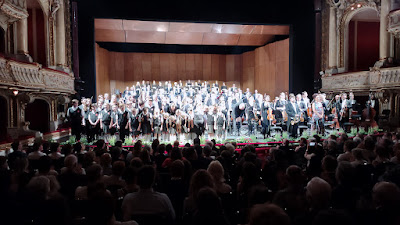






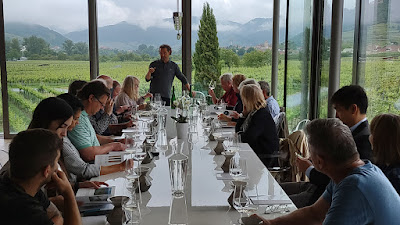


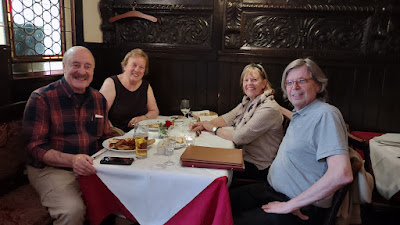





















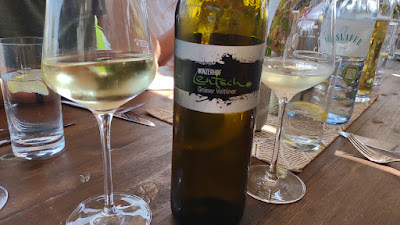



























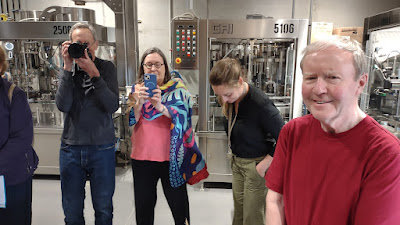














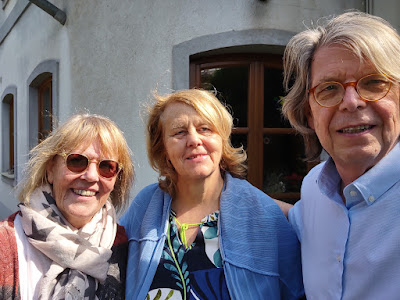











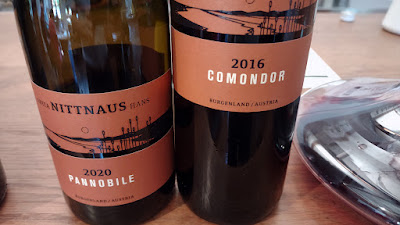


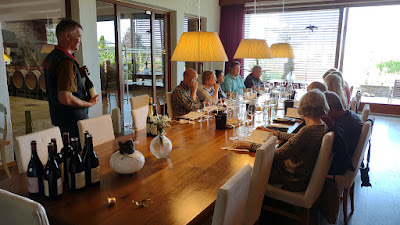










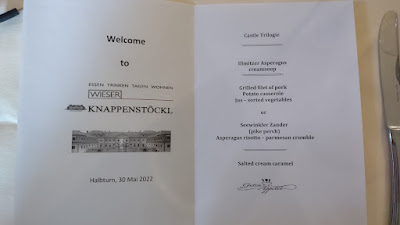


















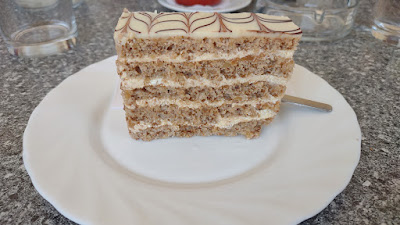


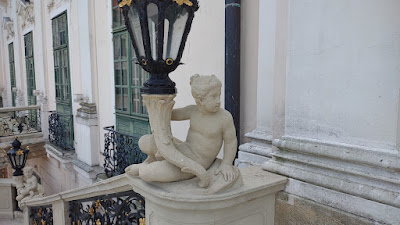

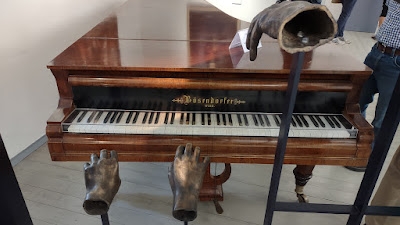

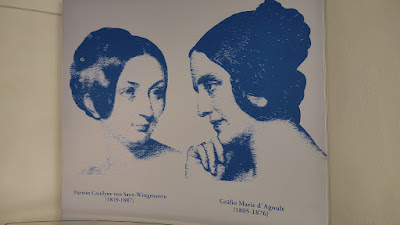




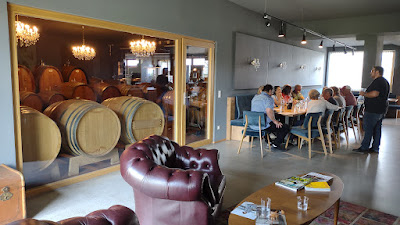




















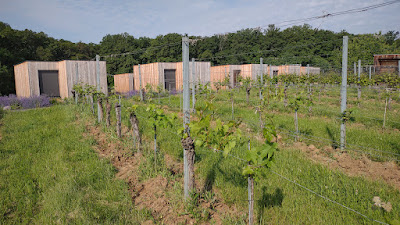
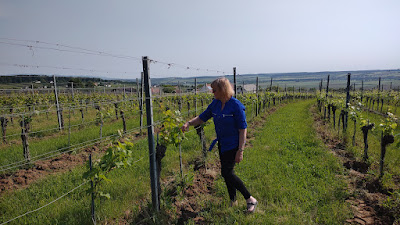






























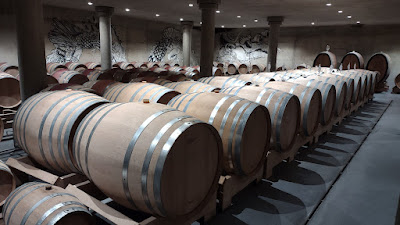




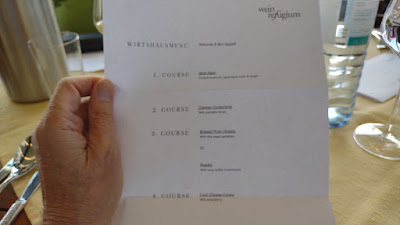






















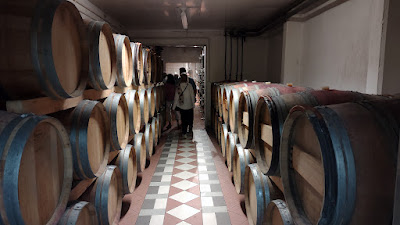










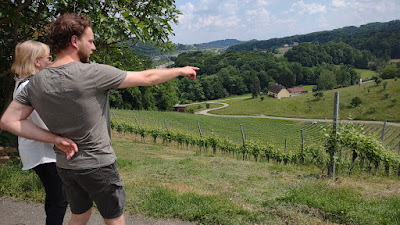



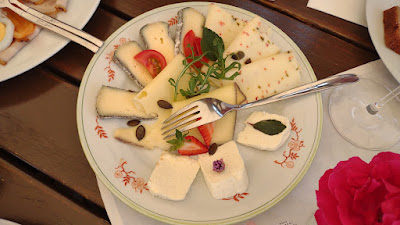








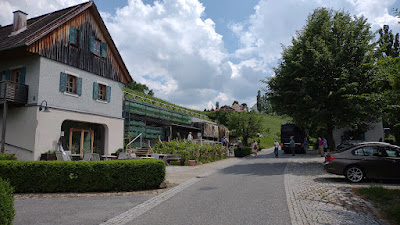












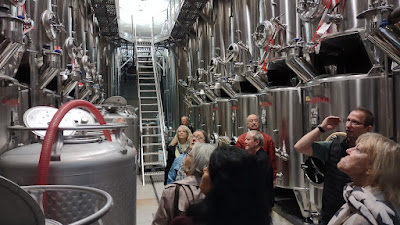









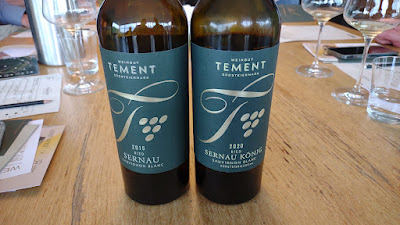





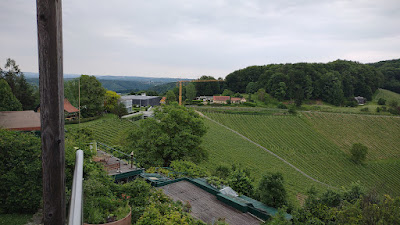





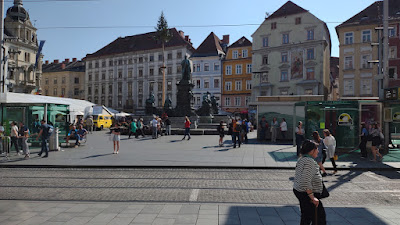

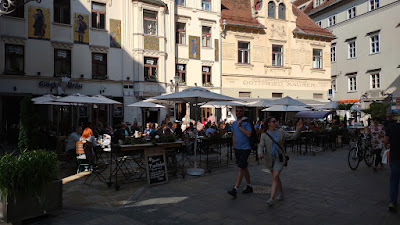

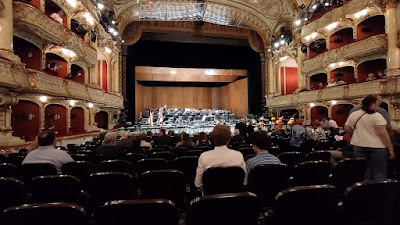















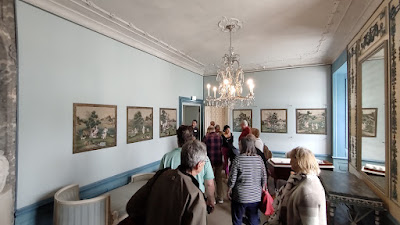

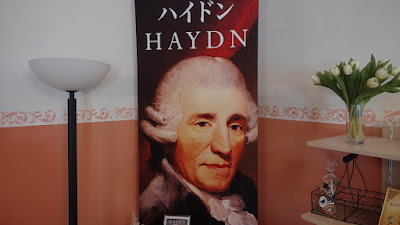

















































































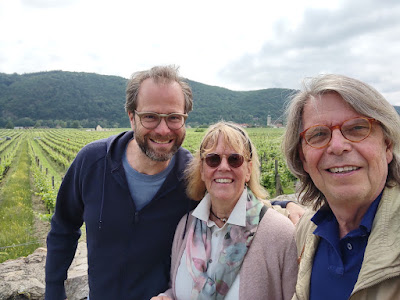












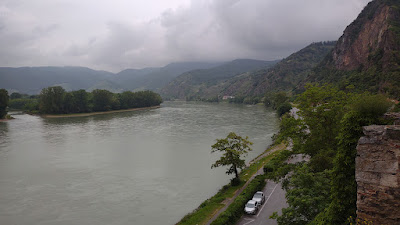
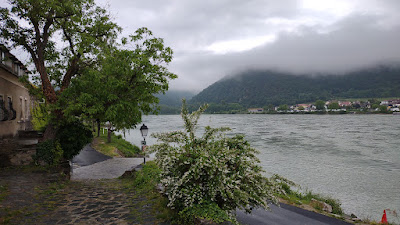























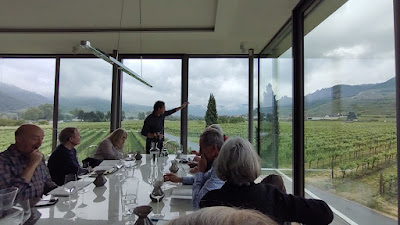





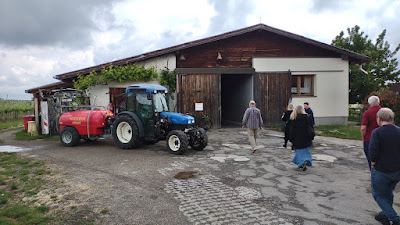










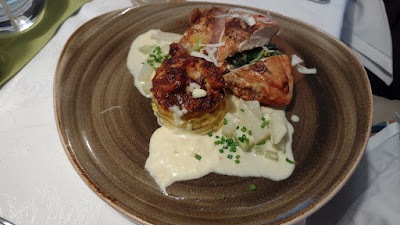























No comments:
Post a Comment